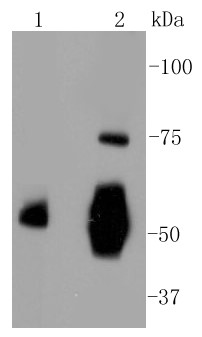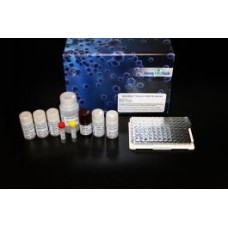Vitronectin antibody
GTX103475
ApplicationsImmunoFluorescence, Western Blot, ELISA, ImmunoCytoChemistry, ImmunoHistoChemistry, ImmunoHistoChemistry Paraffin
Product group Antibodies
TargetVTN
Overview
- SupplierGeneTex
- Product NameVitronectin antibody
- Delivery Days Customer9
- Application Supplier NoteWB: 1:500-1:3000. IHC-P: 1:100-1:1000. *Optimal dilutions/concentrations should be determined by the researcher.Not tested in other applications.
- ApplicationsImmunoFluorescence, Western Blot, ELISA, ImmunoCytoChemistry, ImmunoHistoChemistry, ImmunoHistoChemistry Paraffin
- CertificationResearch Use Only
- ClonalityPolyclonal
- Concentration0.34 mg/ml
- ConjugateUnconjugated
- Gene ID7448
- Target nameVTN
- Target descriptionvitronectin
- Target synonymsV75, VN, VNT, vitronectin, complement S-protein, epibolin, serum spreading factor, somatomedin B
- HostRabbit
- IsotypeIgG
- Protein IDP04004
- Protein NameVitronectin
- Scientific DescriptionThe protein encoded by this gene is a member of the pexin family. It is found in serum and tissues and promotes cell adhesion and spreading, inhibits the membrane-damaging effect of the terminal cytolytic complement pathway, and binds to several serpin serine protease inhibitors. It is a secreted protein and exists in either a single chain form or a clipped, two chain form held together by a disulfide bond. [provided by RefSeq]
- Storage Instruction-20°C or -80°C,2°C to 8°C
- UNSPSC12352203
References
- Fox CR, Parks GD. Complement Inhibitors Vitronectin and Clusterin Are Recruited from Human Serum to the Surface of Coronavirus OC43-Infected Lung Cells through Antibody-Dependent Mechanisms. Viruses. 2021,14(1). doi: 10.3390/v14010029Read this paper
- Sato K, Kumagai Y, Sekizuka T, et al. Vitronectin binding protein, BOM1093, confers serum resistance on Borrelia miyamotoi. Sci Rep. 2021,11(1):5462. doi: 10.1038/s41598-021-85069-wRead this paper
- Yang F, Wei Y, Han D, et al. Interaction with CD68 and Regulation of GAS6 Expression by Endosialin in Fibroblasts Drives Recruitment and Polarization of Macrophages in Hepatocellular Carcinoma. Cancer Res. 2020,80(18):3892-3905. doi: 10.1158/0008-5472.CAN-19-2691Read this paper
- Seto S, Morimoto K, Yoshida T, et al. Proteomic Profiling Reveals the Architecture of Granulomatous Lesions Caused by Tuberculosis and Mycobacterium avium Complex Lung Disease. Front Microbiol. 2019,10:3081. doi: 10.3389/fmicb.2019.03081Read this paper
- Lu CH, Lin ST, Chou HC, et al. Proteomic analysis of retinopathy-related plasma biomarkers in diabetic patients. Arch Biochem Biophys. 2013,529(2):146-56. doi: 10.1016/j.abb.2012.11.004Read this paper



